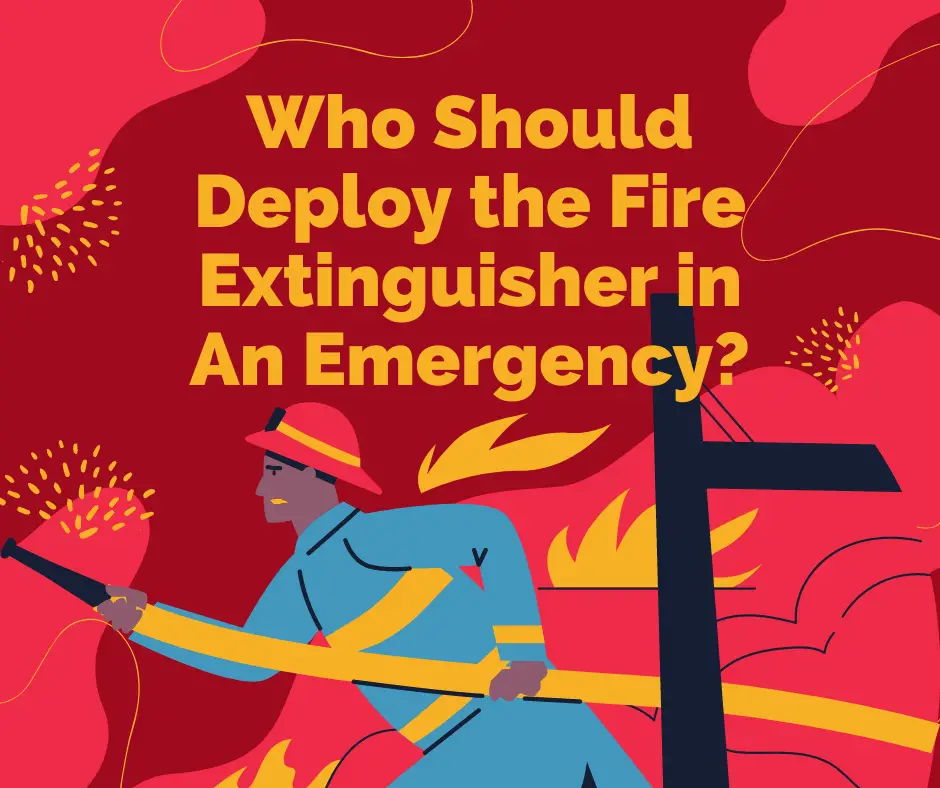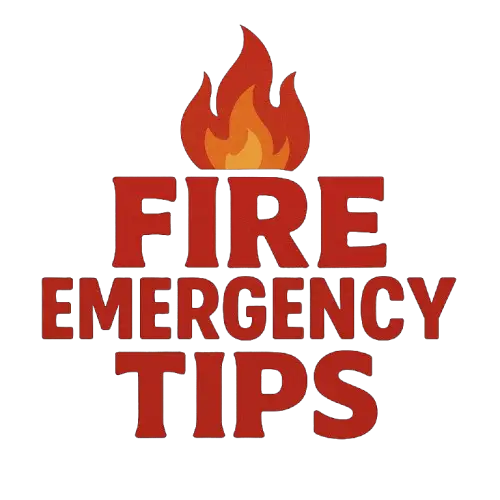
Fire extinguishers are important tools to have in any emergency where fire is involved. They are designed to put out small fires before they become larger and harder to control. However, it is important to know who should deploy the fire extinguisher in an emergency to avoid further damage, injury, or even death while trying to use it.
Trained employees or people trained should use the fire extinguisher first, but they need to consider the fire’s size, type, distance, and their safety. When in doubt, evacuate and call the fire department.
Understanding Fire Extinguishers
Before delving into the discussion on who should deploy the fire extinguisher in an emergency, it is important to have a basic understanding of fire extinguishers.
Fire extinguishers are portable devices that are designed to put out small fires. They contain a pressurized agent that can be discharged onto the fire to extinguish it. The type of agent used in a fire extinguisher will depend on the type of fire it is designed to put out.
Types of Fires and Fire Extinguishers
There are four types of fires, and each requires a different type of fire extinguisher. These types include:
Class A Fires
These are fires involving ordinary combustibles such as wood, paper, or cloth. Fire extinguishers designed for class A fires use water or a water-based agent to extinguish the fire.
Class B Fires
These are fires involving flammable liquids such as gasoline, oil, or paint. Fire extinguishers designed for class B fires use foam or a dry chemical agent to extinguish the fire.
Class C Fires
These are fires involving electrical equipment such as computers, appliances, or wiring. Fire extinguishers designed for class C fires use a non-conductive agent to extinguish the fire.
Class D Fires
These are fires involving flammable metals such as magnesium, titanium, or potassium. Fire extinguishers designed for class D fires use a dry powder agent to extinguish the fire.
Who Should Deploy the Fire Extinguisher in an Emergency?
In an emergency, it is important to know who should deploy the fire extinguisher to avoid further damage or injury. The following are some guidelines to help determine who should deploy the fire extinguisher:
Employees Trained in Fire Safety
Employers should ensure that their employees are trained in fire safety, including how to properly use a fire extinguisher. These trained employees should be the first to attempt to put out a fire using a fire extinguisher.
Size of the Fire
If the fire is small and contained, it may be appropriate for someone other than a trained employee to use the fire extinguisher. However, if the fire is large or spreading quickly, it is best to evacuate the area and call the fire department.
Type of Fire
As mentioned earlier, different types of fires require different types of fire extinguishers. It is important to ensure that the correct type of fire extinguisher is being used for the type of fire. If in doubt, it is best to evacuate the area and call the fire department.
Distance to the Fire
If the fire is close to an exit, it may be appropriate for someone to use the fire extinguisher to attempt to put out the fire and evacuate the area. However, if the fire is in a confined space or blocking the exit, it is best to evacuate the area and call the fire department.
Personal Safety
Personal safety should always be the top priority in any emergency. If the fire is too large, too hot, or too smoky, it is best to evacuate the area and call the fire department. No one should attempt to put out a fire if it puts their personal safety at risk.
Final thoughts
Fire extinguishers are important tools to have in any emergency where fire is involved. Knowing who should deploy the fire extinguisher in an emergency is important to avoid further damage, injury, or even death.
Employers should ensure that their employees are trained in fire safety and that they understand how to properly use a fire extinguisher. Trained employees should be the first to attempt to put out a fire using a fire extinguisher.
However, it is important to consider the size and type of fire, the distance to the fire, and personal safety before attempting to use a fire extinguisher. If in doubt, it is best to evacuate the area and call the fire department.
It is also important to regularly inspect and maintain fire extinguishers to ensure that they are in good working condition. This includes checking the pressure gauge, making sure the pin and tamper seal are intact, and inspecting the hose and nozzle for cracks or other damage. If a fire extinguisher is found to be damaged or expired, it should be replaced immediately.
Finally, it is important to have a fire evacuation plan in place and to regularly practice fire drills. This will ensure that everyone knows what to do in the event of a fire and can evacuate the building safely and quickly.
Knowing who should deploy the fire extinguisher in an emergency is important to avoid further damage, injury, or even death. Employers should ensure that their employees are trained in fire safety and that they understand how to properly use a fire extinguisher.
It is also important to regularly inspect and maintain fire extinguishers, have a fire evacuation plan in place, and practice fire drills. By following these guidelines, we can help prevent fires and ensure the safety of ourselves and those around us.
Also read:
What Does RACE Stand for In Fire Safety? What Does Pass Stand for In Fire Safety?
